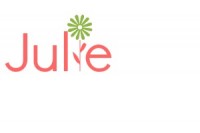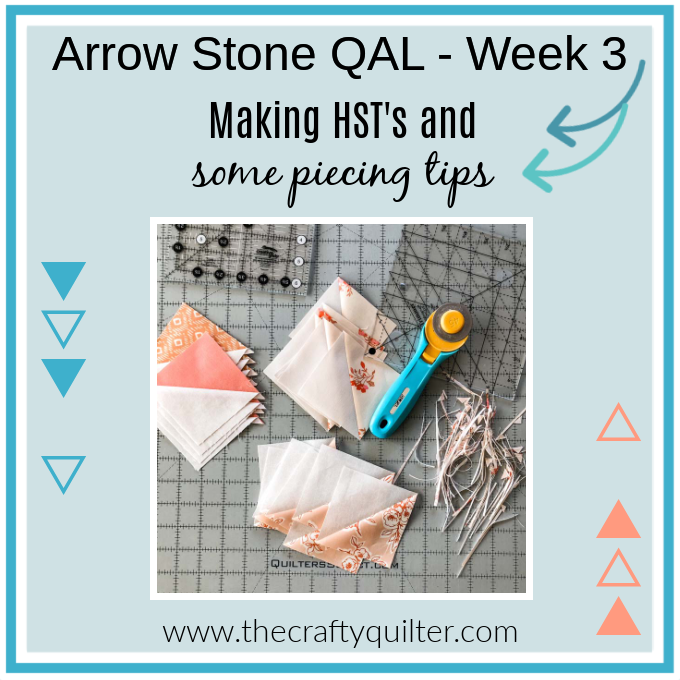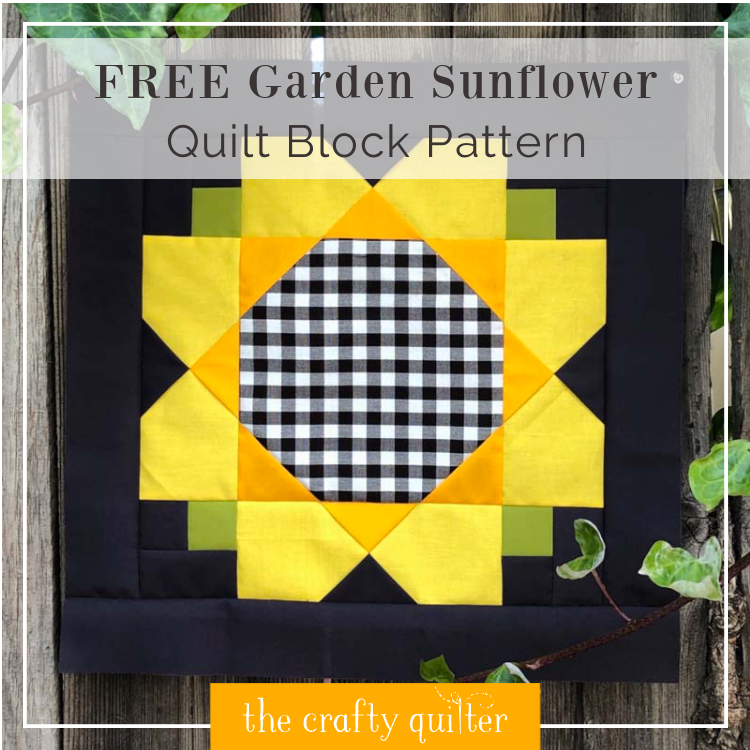Spring Petals QAL, Week 5
We have finally arrived at the final step of the Spring Petals Quilt Along: the binding! This is always a good stage of the quilt process for me. It means I’m in the home stretch. The end is near!
Here is the schedule for the quilt along:
- April 4 (Week 1) Pattern available as a free pdf; pick out your fabrics
- April 10 (Week 2) Cutting and piecing
- April 13 Non-applique option
- April 17 (Week 3) Applique
- April 24 (Week 4) Basting and quilting
- May 1 (Week 5) Binding
- May 8 Final thoughts and Linky Party
- June 7 Giveaway winners announced
Binding can be very intimidating for beginning quilters. I find that some people love it or hate it no matter how experienced they are. I fall into the “love it” category. I find the process exciting because I’ve almost got a finished quilt to admire. A finished project so I can get started on the next one!
There are SO many ways to attach binding to a quilt, and I’ll be showing you the double fold french binding (straight grain, not bias) technique. I’ll give you options on how to finish it off; by machine or by hand.
There is one little “trick” to binding this particular table topper. Some of you may have seen this coming: it has 8 outer corners that are right angles, plus 8 inner corners that are not right angles. Yep, that’s a whole lot of corners! Don’t worry, you can do this. Just think of all the practice you’ll be getting on your corners!
I have just finished putting the binding on the Pam Kitty Garden version of my Spring Petals table topper (above). It took me two hours, start to finish, and that included taking pictures along the way. I did it all by machine and it was the second one I had done in the past three days, so the technique was very fresh in my mind.
We’re going to start at the beginning, with cutting the binding strips. I like to cut my strips on the straight of grain at 2 1/4″ wide.
- For this project, you will need 3 strips that are 2 1/4″ x WOF (width of fabric).
TIP: I recommend using a full width of fabric (42″- 44″) instead of a fat quarter for your binding strips. With all of those corners, you want to limit the number of binding seams, so there is less chance of a seam landing in a corner. We don’t want that to happen because it makes the corners a little bulky and awkward.
Next, we need to join our binding strips together to form one long piece of binding. We’re going to sew the strips together with a diagonal seam. This distributes the bulk of the seam evenly so you don’t get a big lump in one spot.
- Place two strips right sides together, overlapping the ends so they are perpendicular to each other and so that they form the letter “L”. Draw a diagonal line from corner to corner. Start at the upper left corner and end at the bottom right corner.
- Pin on each side of the drawn line.
- Stitch on the drawn line.
- It’s important to enter and exit your stitches exactly at the corners or you’ll have a little “jog” at the seam.
- You can chain piece these if you want.
- Check to make sure you did it right!
- Trim the seam to 1/4″ and cut off the “dog ears”.
- Press seam open.
- Press the binding strip, wrong sides together, along the entire length of the strip.
Now you need to decide where to start sewing your binding onto the quilt. Each side of the table topper is relatively short, and you want to make sure that none of the binding seams end up in a corner. I like to start on the longest side possible and then run the binding around the edges to see where the seams are landing. You can see that process below.
If you can’t avoid a seam landing in a corner, then don’t sweat it. It will be fine; there’s not a whole lot of wiggle room here.
I forgot one thing. You probably still need to trim the backing and batting away from your quilt top! That’s easy enough. Start at a corner and use your ruler to get a nice, right angle. Cut along all sides, squaring up the corners if necessary and trimming even with the edge of the quilt top.
You may need to snip the inside corners with a pair of scissors to get it to release:
Now, we can continue with the binding. Typically, you sew the binding onto the right side (front) of the quilt and then wrap it around the edge and stitch it down to the back side of the quilt. But you need to think about how you want to finish the binding. By hand? Machine only?
Depending upon your answer, you might want to sew the binding onto the back of the quilt and when you wrap it around to the front side. Then you can topstitch by machine close to the folded edge. You can see the results of that technique in the photo below.
If you’re looking for “perfect” binding results, stitching the binding down by hand is the best way to go. That means you’ll be stitching the binding to the front of the quilt with the raw edges of the binding lining up with the raw edges of the quilt. But, to be honest, I don’t do too many hand sewn bindings any more. If it’s not an heirloom quilt or if it’s not being entered into a quilt show, then quick and easy is fine with me.
Either way, I always use a walking foot to stitch my binding on. It helps feed everything evenly. I use a full 1/4″ seam allowance as well. I leave about 8 inches of the leading binding tail unsewn so that I can join the binding tails with a seam at the end.
TIP: Make sure that your seam allowance is just right. You need to wrap the binding around the edge of the quilt so that it covers your stitching on the back. Check it after a few inches of stitching so you can make adjustments if needed.
Binding the 90 degree corners are done the same way as any other quilt, there are just more of them. Here’s a quick rundown of how I do it.
- When you get to a corner, stop 1/4″ before and pivot, stitching out to the corner.
- Turn the quilt and bring the binding up and away from the corner.
- Fold the binding back down on itself. The fold should be even with the top edge.
- Check to make sure you have everything “square”.
- Begin stitching the next side at the folded edge.
I did a tutorial last year on how to bind inside corners. I want you to read that blog post. I didn’t think it was necessary to make a separate tutorial for this quilt-along since it’s the exact same quilt and technique. So, it’s really important to look at that tutorial for this project in order to handle those inside corners properly. Again, it’s not hard. It’s just different.
Once you’ve stitched the binding around the quilt, you need to join your binding tails. Again, there are lots of ways to do this. I usually join them with a diagonal seam, but since each side of this table topper is so short, there’s no room to sew a diagonal seam. But that’s o.k. A straight seam will do and it’s much easier to figure out.
- As you come to the end of the binding, leave enough space open (unsewn) so you can connect the two ends.
- Trim the beginning binding tail so that it’s straight and midway in the open, unsewn space.
- Overlap the ending tail with the beginning tail and pin.
- Use a ruler and measure 1/2″ over from the cut end of the first tail and mark the ending tail.
- Cut the ending tail on the mark.
- Open up the binding tails and match the raw edges. Pin.
- Stitch 1/4″ seam and fingerpress it open.
- Check to make sure it fits and that it’s not twisted.
- Pin the binding in place and stitch the remainder of the seam.
Next, I use an iron to press the binding out over the edge of the quilt .
Then I hold the binding in place using Clover Wonder Clips and hand stitch it to the back of the quilt. I use thread that matches the color of the binding, and a blind-hem stitch. You can find a great tutorial for hand stitching a binding at Connecting Threads.
If you want to stitch the binding down by machine and you’ve started by stitching the binding onto the front of the quilt, I recommend glue-basting the binding in place instead of pinning or using clips. You’ll get better results. I like to use a Sewline Water-Soluble Fabric Glue Pen because it has the perfect size tip and it has a blue tint making it easy to see.
Once the binding is basted in place with glue, you can stitch it by machine. From the front side, stitch in the ditch and make sure the bobbin thread color matches the binding. You should catch the edges of the binding on the backside of the quilt.
This technique is not a perfect system. You sometimes miss catching the edge of the binding underneath, especially at the corners. And doesn’t always looks so pretty from the back side:
Choose a method that you’re most comfortable with. Have fun with it and don’t worry if it’s not perfect. Remember, if you can’t see it from a galloping horse 50 yards away….
This is the final lesson of our quilt along. If you’ve made it through this lesson, then you are well on your way to becoming a skilled binding technician. Add that to your resume!
Remember, next week I’ll put up a Linky tool and you can show us your project(s). The Fat Quarter Shop has generously offered two $25 gift certificates to their store and I’m throwing in my own prize package. I’ll be picking three winners on June 7. You can enter more than one table topper, it just needs to be from the Spring Petals pattern. Projects don’t need to be completely finished; tops only will be accepted.
Thanks to everyone who has followed along and given me such nice feedback. It’s been so much fun seeing your progress on Instagram and Flickr! (Hashtag #springpetalsqal).
Have a great weekend!




























A little difficult this kind of binding, but it is done from now! It was a great pleasure to follow your tutorials for this beautiful table topper!
I finished my topper just now! Thanks for your excellent tutorial, Julie!
I have just completed my first Binding with Unusual Corners, and learned a lot!!
I can’t wait to see all of the Spring Petals in the linky next week!
what a clear tutorial, I have problems with the corner now I know why I do not pivet and sew diagionally so next quilt |I will try your way
One of these days I will be brave enough to machine stitch my binding! Yours look so nice and neat. I don’t mind hand stitching binding usually…keeps me from snacking in front of the tv at night! :). LOVE your Pam Kitty topper….need to find that fabric and have it follow me home! And you topper of solids is so pretty…makes me think maybe i could actually prefer clean and crisp modern!
Thanks again for such well written tutorials.
I am very new to the ART of Quilting , but I love what I am learning, i am recently retired I live on the Island of Eleuthera in the Bahamas. We are a small group that meets in Tarpum Bay, Eleuthera every Thursday. I enjoy what I am learning.